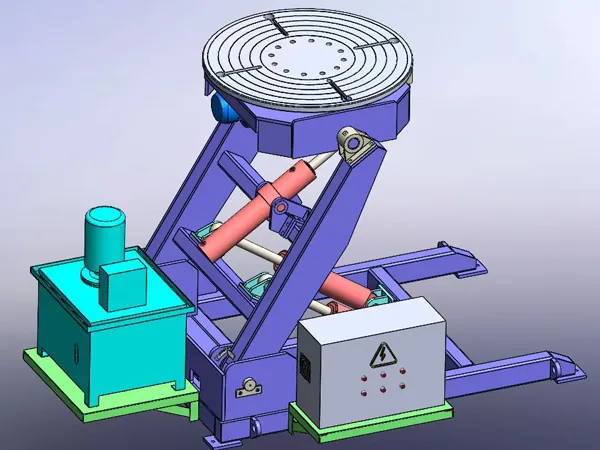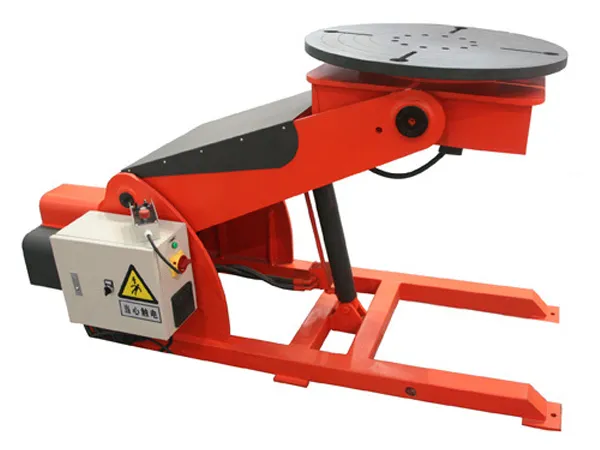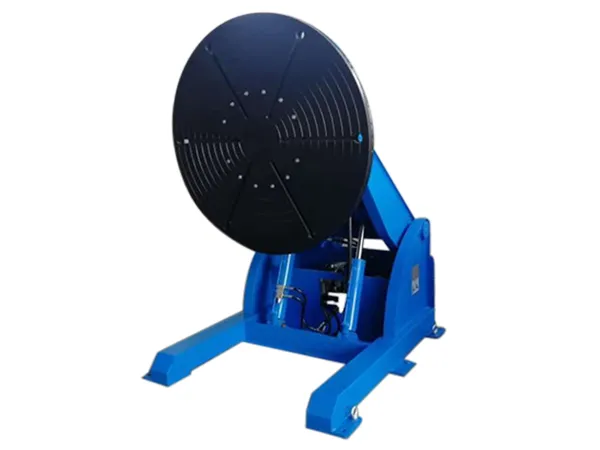A welding positioner is a specialized piece of equipment used in welding applications to position a workpiece in the optimal orientation for welding. It helps welders to achieve better precision, accessibility, and efficiency in the welding process. The positioner allows for the rotation or tilting of the workpiece, making it easier for the welder to reach all necessary angles without having to reposition themselves.The installation of a welding positioner involves several key steps to ensure its proper setup and safe operation.

1. Site Preparation
Choose a location for the welding positioner that provides sufficient space for safe operation and easy access. Ensure that the floor is level and can support the weight of the positioner.
2. Unpacking and Inspection
Carefully unpack the welding positioner and inspect it for any shipping damage. Check for all the components listed in the user manual.
3. Positioner Placement
Place the welding positioner in the desired location. If it is a large or heavy unit, use appropriate lifting equipment to move it into place.
4. Leveling
Use a level to ensure that the welding positioner is perfectly level. This is critical for accurate and stable positioning during welding.

5. Securing the Positioner
Once leveled, secure the welding positioner to the floor using appropriate anchors or fasteners. This step is essential for stability and safety during operation.
6. Power Connection
Connect the welding positioner to the power source according to the manufacturer's specifications. Ensure that the power supply meets the equipment requirements.
7. Control Panel Setup
Set up the control panel based on the welding job requirements. This includes inputting parameters such as rotation speed, tilt angle, and any other relevant settings.
8. Testing
Perform a test run without any welding to ensure that the positioner is functioning correctly. Check all movements, rotations, and tilts to verify that the control system is working as expected.

9. Calibration
Calibrate the positioner if required by the manufacturer. This involves setting reference points and adjusting the system to ensure accurate and repeatable positioning.
10. Safety Checks
Verify that all safety features are functioning correctly. This includes emergency stop buttons, overload protection, and any other safety mechanisms specified by the manufacturer.
11. Operator Training
Train operators on the proper use of the welding positioner, including safety procedures and the correct way to program and control the equipment.
12. Documentation
Keep all user manuals, documentation, and maintenance schedules in a readily accessible location for future reference.
13. Regular Maintenance
Establish a routine maintenance schedule and follow the manufacturer's recommendations for lubrication, inspections, and other necessary maintenance tasks.
Always refer to the specific user manual and guidelines provided by the welding positioner manufacturer, as installation procedures may vary between different models and brands. Additionally, if you are unsure about any aspect of the installation, consult with the manufacturer's technical support or a qualified professional. Safety is a top priority when working with welding equipment.
No. 1 Intersection of Chuangye Avenue and Weilai Avenue,
Yiyang County,Luoyang City, Henan Province, China
+86 400-0379-069
Copyright © 2023 An Automated Welding and Cutting Equipment Manufacturer Focusing on Welding Column Boom and Welding Rotator | All Rights Reserved Technical support: ShangXian